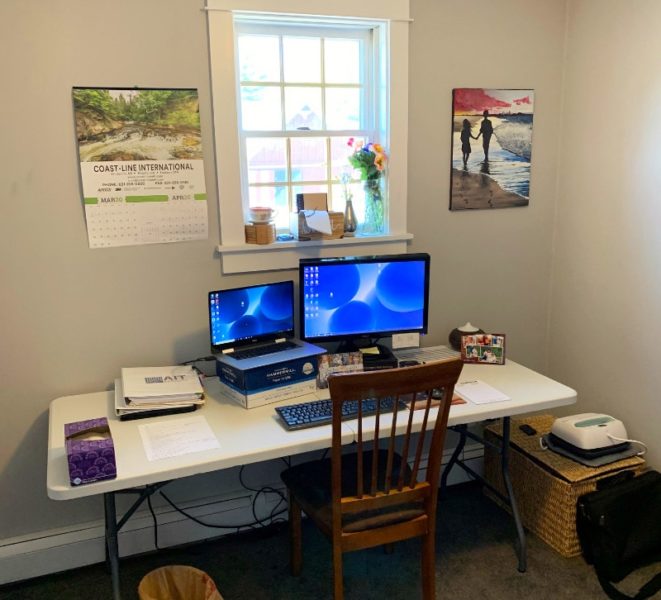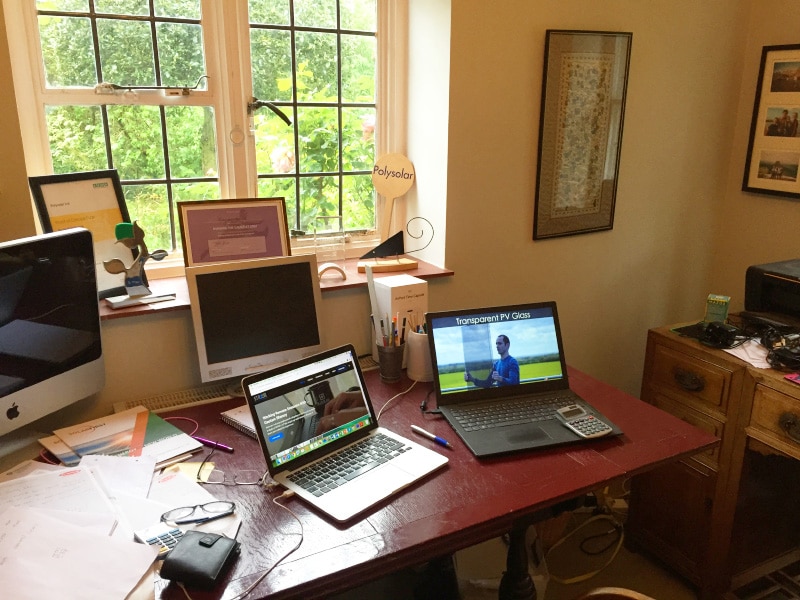As shelter-in-place recommendations continue across the globe in the fight against the spread of COVID-19, companies in all industries—construction included—are being forced to adapt to the new normal of operating through a network of employees who are now all mostly working from home.
While remote workers in every industry share many of the same challenges, like maintaining a regular schedule, homeschooling children and caring for family members, the construction industry’s status as an “essential” business means that many firms face the unique challenge of working on projects and communicating with colleagues who are spread among home offices and jobsites.
Here’s how these companies are adapting in response to COVID-19.
Using digital infrastructure
Some firms have been able to transition to a work-from-home culture using existing technological infrastructure.
At civil engineering firm AIT Bridges in Brewer, Maine, Senior Design Engineer Timothy Kenerson said that the work-from-home move has been relatively stress-free. “Our company is fortunate to have put a digital infrastructure in place to be able to work remotely if anything like this was to ever happen,” Kenerson said. “Because of that forethought, we were able to transition to work from home quite quickly and still maintain the same level of reliable service.”

For 3Diligent CEO Cullen Hilkene (pictured in title image), the turn to remote work has provided an opportunity to increase the manufacturing software company’s use of online communication technology. “We’ve been increasing our use of videoconferencing tools to keep in touch with our team and also our supply and customer partners,” Hilkene said. “We’ve also been tracking where suppliers are shut down due to stay-at-home orders and using our team and software to dynamically adjust.”
In addition to moving more operations online, Hilkene said the El Segundo, California, company has been using digital technologies to address some of the challenges caused by the COVID-19 crisis—like helping customers move operations online by offering free access to a trial version of its shop management software. It has also had internal conversations about what it can do to help address the Personal Protective Equipment (PPE) shortage among healthcare workers.
New challenges, new policies
While working from home may be the new normal for the foreseeable future, many firms are responding with new policies to help their employees balance work while also facing unique personal challenges such as a spouse’s job loss or having to homeschool children.
For PCL Construction, the emphasis is on keeping employees healthy and offering assistance where needed.
“In a situation that is changing daily, we are continually monitoring new developments and adjusting our response to help flatten the curve,” said company spokesperson Shane Jones. The firm is following government regulations and recommendations from the Centers for Disease Control and Prevention (CDC) and The World Health Organization (WHO), asking employees to work remotely if possible, canceling all business travel and in-person company events and supporting staff with collaboration technology.

The Edmonton, Alberta-based company is also encouraging all its employees in the United States and Canada to use its Employee Assistance Program (EAP) for help balancing work and personal challenges.
On the company’s construction sites, PCL has worked to reduce employee populations through staggered breaks and lunch schedules, social distancing and increasing hygiene and safety measures, Jones said. In addition to these risk-mitigation efforts, PCL has adopted new policies to help employees respond to the crisis.
This includes the creation of a Pandemic Response Committee, which meets daily to adjust the company’s ongoing response to the virus. Jones said the company is also donating N95 respirators to local health authorities.
The transition to working from home was not without hiccups for British renewable energy company Polysolar. “We were sent home,” said Hamish Watson, the company’s CEO, “and like a lot of people, we didn’t think of bringing everything with us—and we can’t get back in due to risks of contamination. Luckily, we largely operate on laptops anyway.”
Adjusting to the new work environment has meant accommodating a shift in the needs and working conditions faced by many of Polysolar’s clients.
“Our commercial and domestic clients have largely shut down, but our public-sector clients haven’t,” Watson said. “They’re ‘essential’ work, and we’re continuing to contribute to them. However, we do have issues with access to our warehouses. Certain trades and components are difficult to access right now. But we’re still operating.”











